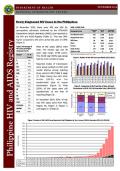What's New
Displaying results 3201 - 3210 of 4914
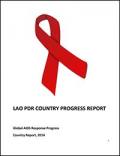
Resource | Publications,
Lao People’s Democratic Republic (Lao PDR), known for decades as a "landlocked country", has now become "land‐linked", in the recent years. This is due to the upgrading of roads both domestically and with its neighbouring countries such as Cambodia, China, Myanmar, Thailand and Viet Nam, with relatively higher HIV prevalence. As the country is committed to economic expansion, this increased transit routes enabled new opportunities in employment and trade with increased mobility of the people in and out of the country. This dynamic change of increased mobility across borders coupled with the existing commercial sex vulnerabilities and the emergence of groups at high risk, places Lao PDR on a continuous alert of a new HIV threat due to the growing risk to HIV vulnerabilities.
As the NSAP 2011‐2015 is in the penultimate year of implementation, the preparation process of this report is an opportunity for the National AIDS Authority and its partners to review and reflect on the progress made in the last three years, as well as to consider the efforts needed to reach the ambitious targets set in the National Strategy. Recognising its important status, all partners have been invited to take part in an open and participatory process for the 2014 report.

Resource | Publications,
Since 1986 when the first HIV case made its debut, HIV has become one of Malaysia's most serious health and development challenges. At the beginning of the epidemic, injecting drug users was key driven factor that charted the graph by leaps and bounds as the country’s responses focused more on creating awareness and early detection.
To streamline National response, AIDS/STD Sector was established within the Public Health Division in Ministry of Health Malaysia in 1993. In 1992, Malaysia AIDS Council (MAC) was established under the auspices of the Ministry of Health to compliment the national responses with special focus on most-at-risk populations. Without doubt, the current prevention landscape provides a number of opportunities that were not available in 1986.
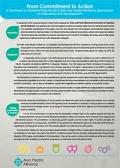
Resource | Fact Sheets,
In September 2013, the governments in Asia Pacific adopted the 'Asian and Pacific Ministerial Declaration on Population and Development', a progressive and visionary agenda to advance people’s rights and well-being through inclusive and equitable development in the region over the next decade and which gained unprecedented support and endorsements from member states. It is critical that the policy directions and priority actions set forward are realized. The document is also valuable as a basis for discussions over Post-2015, the Beijing +20 review, and in other global, regional and national level and multi-stakeholder dialogues.
The Asia Pacific Alliance for Sexual and Reproductive Health and Rights (APA), in collaboration with partners, produced six factsheets on the main outcomes of the 6APPC on different topics: Women and Girls, Adolescents and Young People, Migrants, SOGI, Aging, and Modalities of Implementation. They can be used to continue the momentum at the local, national, and regional level, in addition to strengthen progressive commitments at the international level.

Resource | Tools,
The young men and women who took part at the 2012 UNiTE Youth Forum committed to launch the UNiTE Youth Network, a diverse group with ambitious ideas to serve as role models to their peers and inspire their communities to do more to end violence against women and girls. Peer education can be an effective tool to ensure social change as young people are often better equipped to understand the feelings, thoughts and experiences of other young people.
This is why the Asia-Pacific UNiTE Campaign secretariat, together with a group of Asia Pacific regional members of the UNiTE Youth Network, developed this regionally focused, youth-friendly training manual for peer educators to help facilitate discussions on gender equality, violence against women, healthy relationships and positive activism.
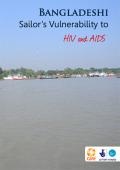
Resource | Publications,
This study was initiated to generate evidence around the vulnerabilities faced by migrant populations traveling to India. Both qualitative and quantitative methods were used to explore the vulnerability of sailors and a standard BCC questionnaire was used to assess knowledge around HIV and AIDS.
The research study highlights specific opportunities for designing a HIV prevention programme addressing the unique challenges and vulnerabilities of sailors in Bangladesh which includes designing HIV and AIDS information dissemination in appropriate written and verbal from , advocate with NGO’s and civil society organization in raising awareness of the potential HIV – vulnerability of sailors.
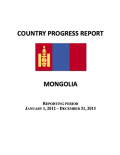
Resource | Publications,
Mongolia has always been committed to an inclusive approach to the development of the Country Progress Report and the Global AIDS Response Progress Reporting (GARPR) process. The main stakeholders in Mongolia’s national response include government institutions, development partners, and civil society organizations (as well as PLWHA). In order to ensure an inclusive and consultative process, a technical working group (TWG) was formed, comprising of government and non-government technical experts and led by the National Center for Communicable Disease (NCCD).
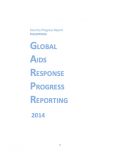
Resource | Publications,
Unlike in other parts of the world, the AIDS Epidemic in the Philippines has been growing rapidly. In 2000, only one new case every three days was diagnosed. However, by the end of 2013, there was already one new case every two hours. A concentrated epidemic among the key affected populations (KAP) – Males who have Sex with Males (MSM) and People who Inject Drugs (PWID) may be seen in certain geographic areas. Since detection of HIV cases and the behaviour of KAPs is of utmost importance, the passive and active surveillance in the country has been strengthened.

Resource | Publications,
In Cambodia, women and girls continue to be subjected to physical, psychological, sexual and economic violence, cutting across all divisions of income, culture and class in their daily public and private spheres. In contexts where women and girls face additional barriers in access to human rights, protection and justice they often experience additional risks for violence against women. This includes but is not limited to women with disabilities, women living with HIV, lesbian, bisexual and transgender (LBT) women, sex workers, entertainment workers, garment factory workers and other female employees, women who use drugs or their partners use drugs, women in prisons, indigenous women and women from religious or ethnic minorities.
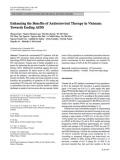
Resource | Publications,
Vietnam has a concentrated HIVepidemic, with the highest HIV prevalence being observed among people who inject drugs (PWID). Based on its experience scaling-up robust HIV interventions, Vietnam aims to further strengthen its response by harnessing the preventive benefits of antiretroviral therapy (ART).






